Tattoos have been around for centuries, and they continue to be a popular form of self-expression and body art. Tattoo styles have evolved over time, from traditional to hyper-realistic, and everything in between. In this article, we will explore 15 popular tattoo styles, their elements, and what makes each style unique.

The evolution of tattoo styles has been influenced by cultural, artistic, and technological advancements. Traditional tattoos, for example, were popularized by sailors and were characterized by bold lines and bright colors. Modern tattoo movements, on the other hand, have been influenced by various art forms, including graffiti, pop art, and graphic design. The result is a diverse range of tattoo styles that appeal to different tastes and preferences.
Specialized tattoo styles have also emerged, catering to specific themes, such as Japanese, tribal, and biomechanical. Choosing the right tattoo style can be daunting, but understanding the elements that make up each style can help make the decision easier. Whether you’re a first-timer or a seasoned tattoo enthusiast, this article will provide valuable insights into the world of tattoo styles.
Key Takeaways
- Tattoo styles have evolved over time, influenced by cultural, artistic, and technological advancements
- Specialized tattoo styles cater to specific themes, making it easier to choose the right style
- Understanding the elements that make up each tattoo style can help in making an informed decision.
The Evolution of Tattoo Styles

Historical Significance
Tattoos have been a part of human culture for thousands of years, with evidence of tattooing dating back to ancient Egypt and Greece. In Japan, tattoos were used as a form of punishment during the Edo period, and later became popular among the working class as a symbol of rebellion. In the West, tattoos were initially associated with sailors and military personnel, who often got tattoos to commemorate their travels and experiences.
Cultural Impact
Over time, tattoos have evolved from a symbol of rebellion to a mainstream form of self-expression. Traditional tattoo styles such as American traditional and Japanese tattoo style have remained popular, while newer styles like hyper-realistic and watercolor tattoos have emerged. Polynesian and tribal tattoo styles have also gained popularity, often representing cultural heritage and identity.
One influential figure in the evolution of tattoo styles is Sailor Jerry, a prominent tattoo artist in the mid-20th century. Sailor Jerry’s work was heavily influenced by traditional American tattooing, and his designs have become iconic within the tattoo community.
Overall, the evolution of tattoo styles reflects the changing attitudes towards tattoos in society. What was once considered taboo and associated with certain subcultures is now widely accepted and celebrated as a form of art and self-expression.
Traditional Tattoos

Traditional tattoos are some of the most popular tattoo styles around the world. They’re characterized by bold lines, bright colors, and black outlines. Traditional tattoos typically include nautical themes, pin-up girls, and other classic designs.
American Traditional
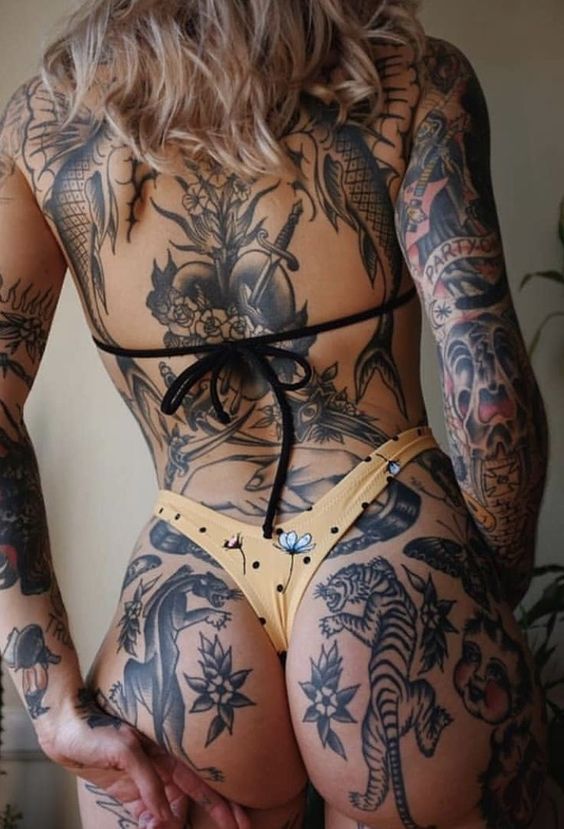
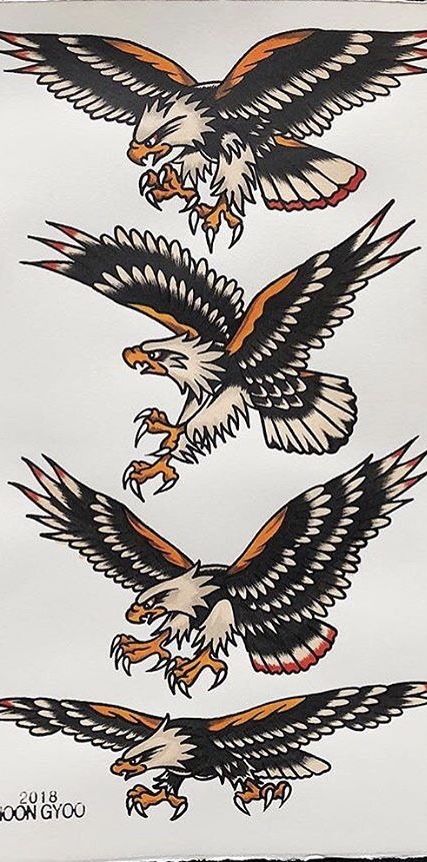
American Traditional tattoos, also known as Old School tattoos, are a classic style that originated in the United States in the early 1900s. They’re known for their bold lines and bright colors, and often feature nautical themes such as anchors, ships, and mermaids. Sailor Jerry is one of the most famous American Traditional tattoo artists, and his designs continue to be popular today.
Japanese Irezumi
Japanese Irezumi tattoos are a traditional style that originated in Japan. They often feature samurai, dragons, and koi fish, and are known for their intricate designs and use of negative space. Irezumi tattoos are typically done in black and gray, and can take many sessions to complete.
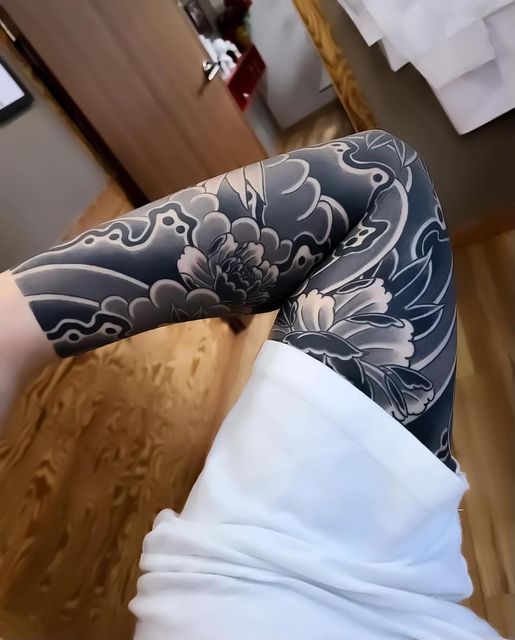
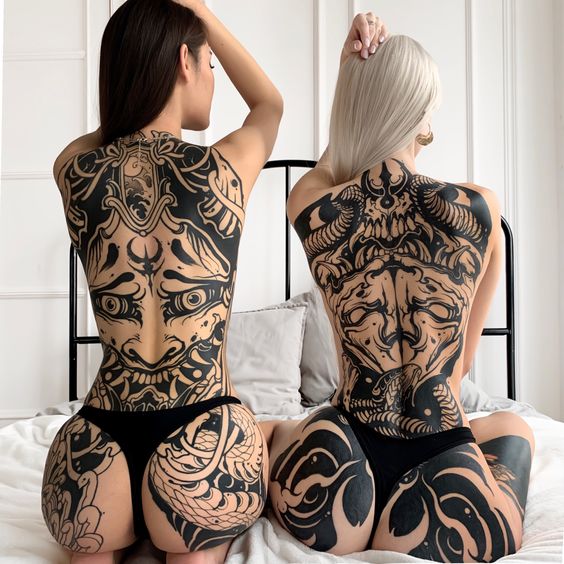
Overall, traditional tattoos are a timeless style that continue to be popular today. Whether you’re looking for a classic American Traditional tattoo or a detailed Japanese Irezumi design, there’s a traditional tattoo style for everyone.
Modern Tattoo Movements

Realism Tattoos
Realism tattoos, also known as hyper-realistic tattoos, aim to create an image that is as close to reality as possible. These tattoos often depict portraits of people and animals, landscapes, and objects.
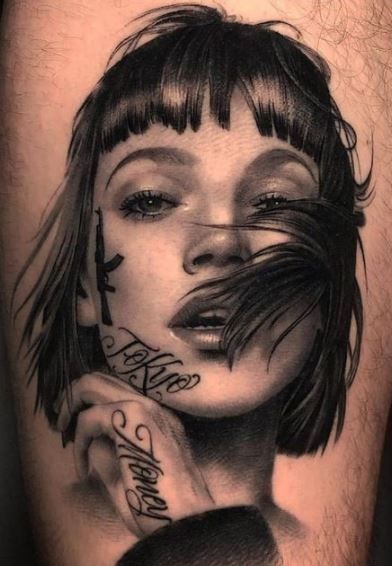
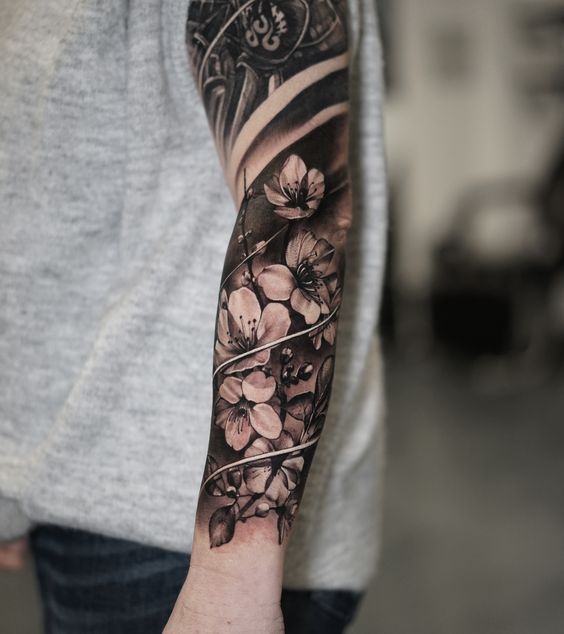
The artists who specialize in realism tattoos use a range of techniques to create a lifelike image, including shading, color blending, and fine details. The color palette used in realism tattoos is often muted and natural, with a focus on creating depth and dimensionality. Negative space is also used to create contrast and highlight the subject.
Geometric Tattoos
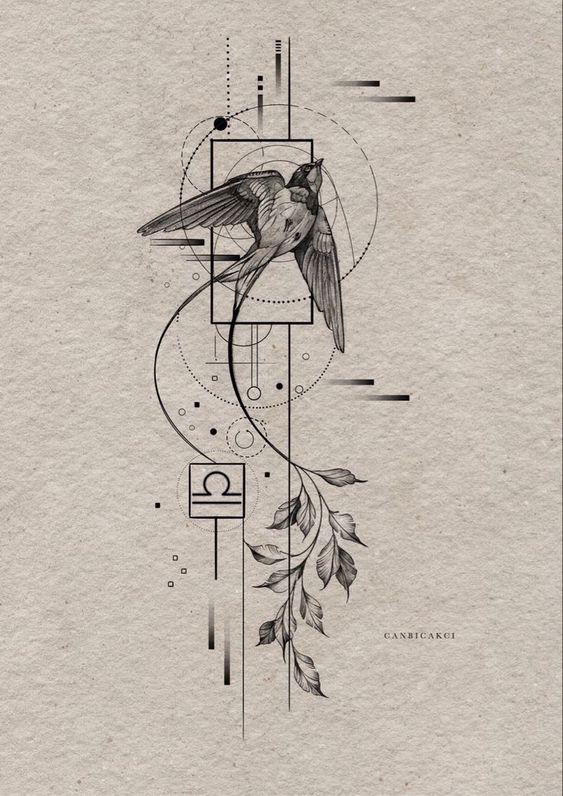
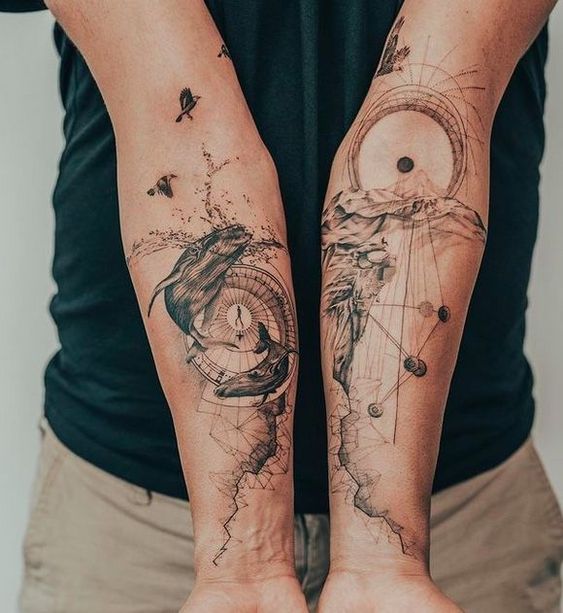
Geometric tattoos are inspired by mathematical shapes and patterns. These tattoos often feature intricate designs that are made up of simple shapes, such as triangles, circles, and squares. The artists who specialize in geometric tattoos use a range of techniques to create precise lines and shapes, including dotwork and blackwork. Geometric tattoos often use a limited color palette, with a focus on black ink. Negative space is also used to create contrast and highlight the shapes.
Watercolor Tattoos
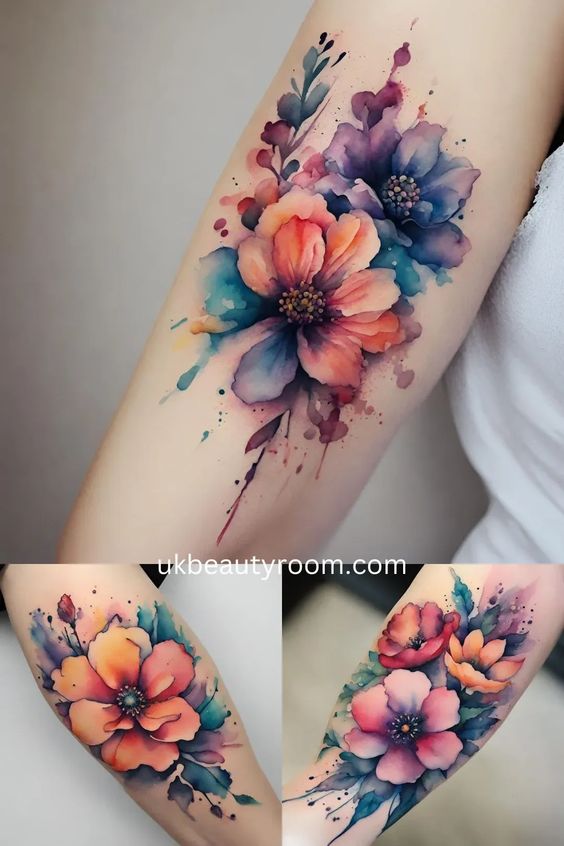
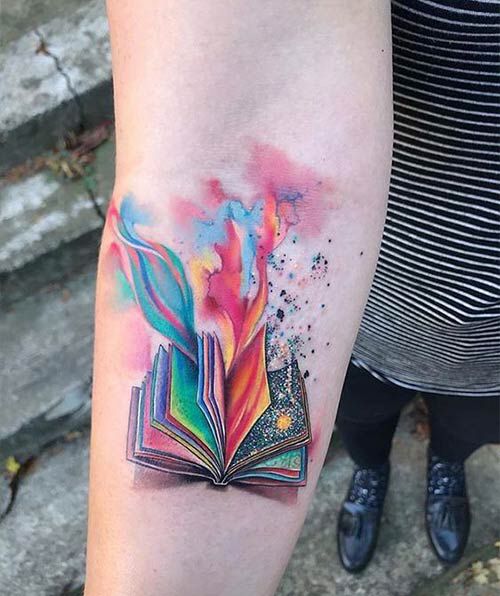
Watercolor tattoos are inspired by the fluid and organic shapes of watercolor paintings. These tattoos often feature bright and bold colors that blend together to create a soft and dreamy effect. The artists who specialize in watercolor tattoos use a range of techniques to create a watercolor effect, including blending, shading, and splattering. Watercolor tattoos often use negative space to create contrast and highlight the subject.
Blackwork Tattoos
Blackwork tattoos are inspired by the use of black ink to create bold and graphic designs. These tattoos often feature intricate patterns and designs that are made up of solid black lines and shapes. The artists who specialize in blackwork tattoos use a range of techniques to create precise lines and shapes, including dotwork and linework. Blackwork tattoos often use negative space to create contrast and highlight the subject.
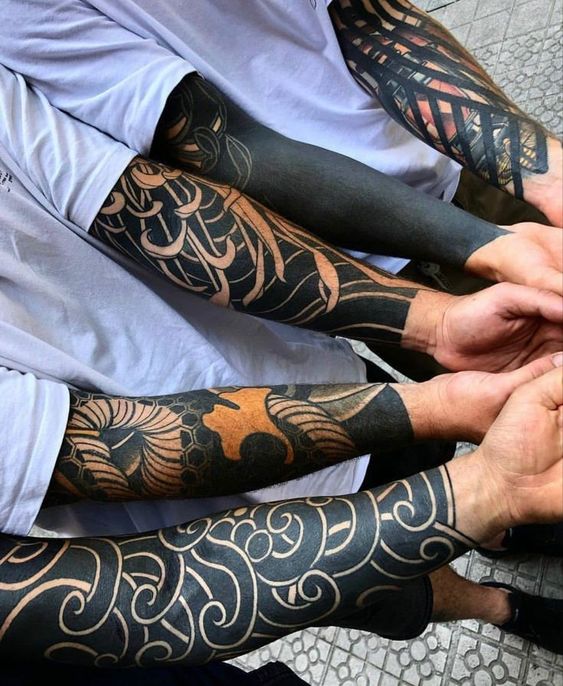
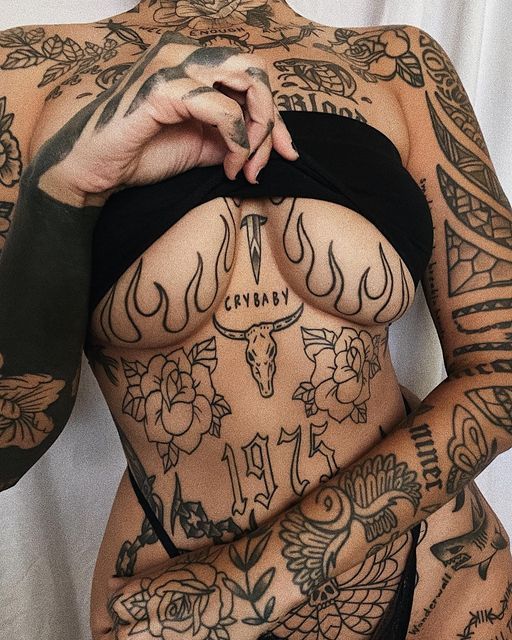
In modern tattoo movements, artistry and technique have reached new heights. Tattoo artists are constantly pushing the boundaries of what is possible, creating stunning and unique designs that reflect their clients’ personalities and passions. Whether it’s realism tattoos, geometric tattoos, watercolor tattoos, or blackwork tattoos, there is a style for everyone.
Specialized Tattoo Styles

Trash Polka Tattoos
Trash Polka is a relatively new tattoo style that originated in Germany in the early 2010s. It is characterized by a combination of realistic and abstract elements, such as photographs, typography, and geometric shapes. The style typically uses monochromatic black and red ink, with occasional splashes of other colors.
Trash Polka tattoos are striking and attention-grabbing, due to their bold designs and vivid colors. They often feature a high level of detail and dimensionality, with elements that appear to be emerging from or receding into the skin.
Biomechanical Tattoos
Biomechanical tattoos are a type of tattoo that combines mechanical and organic elements. They often feature designs that mimic the appearance of machinery or cyborgs, with gears, wires, and other mechanical components interwoven with organic tissue such as muscle and bone.
Biomechanical tattoos are typically done in monochromatic black ink, although some artists may incorporate other colors for added effect. They are known for their striking, three-dimensional designs that create the illusion of depth and movement.
Overall, specialized tattoo styles such as Trash Polka and Biomechanical tattoos offer a unique and eye-catching alternative to traditional tattoo styles. Whether you prefer the bold, vivid colors of Trash Polka or the intricate, three-dimensional designs of Biomechanical tattoos, there is a specialized tattoo style out there to suit your individual taste and personality.
Tattoo Style Elements
Tattoo style elements are the building blocks of a tattoo design. They are the different components that come together to create a unique tattoo that represents the wearer’s personality, beliefs, and experiences. In this section, we will explore the most important tattoo style elements and how they contribute to the overall look and feel of a tattoo.
Symbolism and Meaning
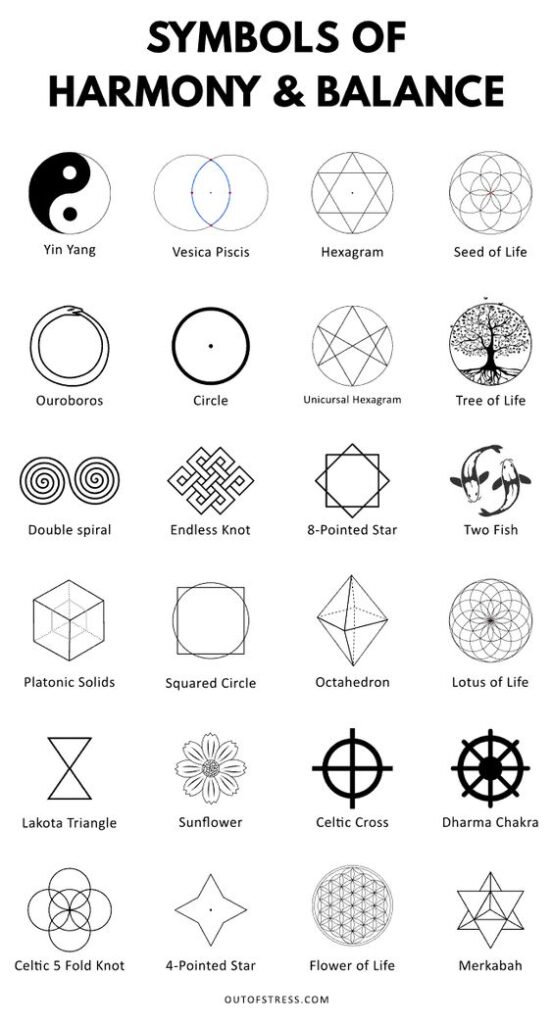
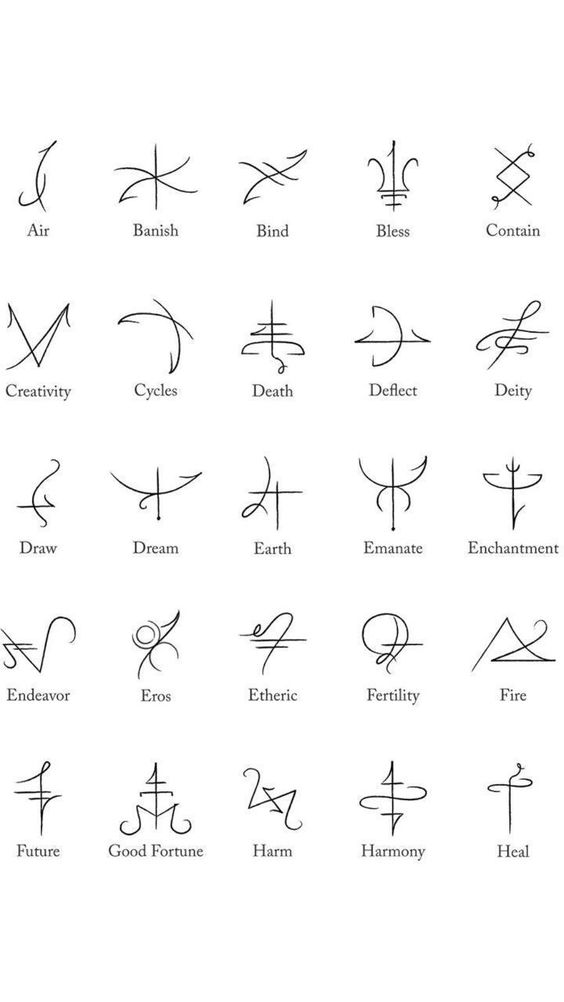
Symbolism and meaning are perhaps the most important elements of a tattoo design. They give a tattoo its depth and significance, and can make it a powerful expression of the wearer’s identity. Many tattoos are designed to represent something specific, such as a loved one, a favorite animal, or a cultural symbol. Others are more abstract, representing emotions or ideas that are important to the wearer.
Color and Black & Grey
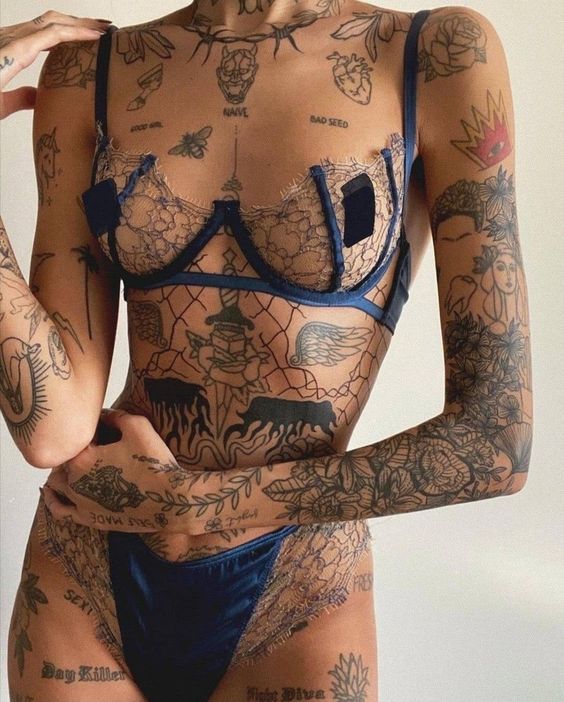
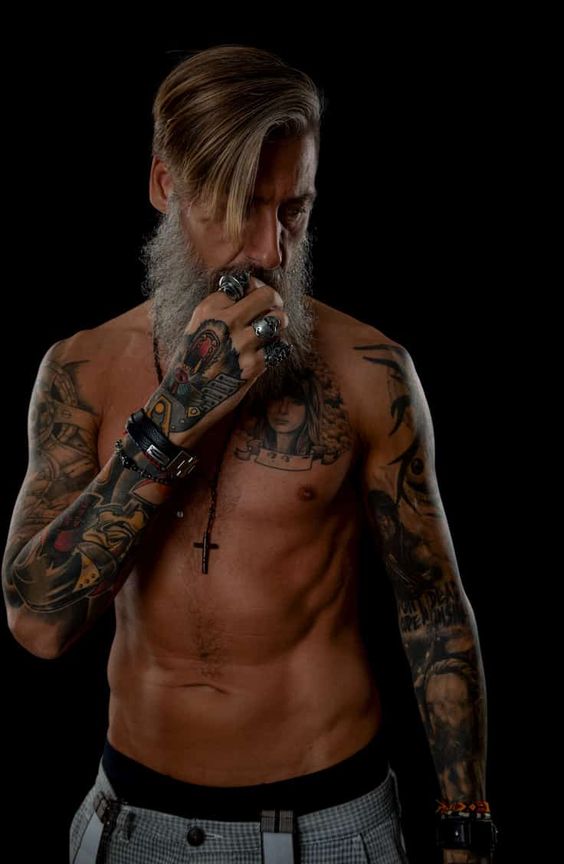
Color and black & grey are the two main color palettes used in modern tattooing. Color tattoos are vibrant and eye-catching, and can be used to create a wide range of effects, from bold and graphic to soft and subtle. Black & grey tattoos, on the other hand, are more understated and elegant, relying on shading and texture to create depth and dimension.
Placement and Size
Placement and size are important considerations when designing a tattoo. The placement of a tattoo can have a significant impact on its meaning and symbolism, and can also affect how visible it is to others. Size is also important, as it can determine how much detail can be included in the design, and how well it will hold up over time.
In conclusion, understanding the different elements of tattoo style is essential for creating a tattoo that is both visually appealing and meaningful. Whether you choose a traditional style or a hyper-realistic design, the key is to find a balance between aesthetics and symbolism, and to choose a design that truly represents who you are.
Choosing the Right Tattoo Style
Understanding Your Preferences
Choosing the right tattoo style is a crucial decision that requires careful consideration. It is important to understand your preferences and what you want to convey through your tattoo. Your personality and artistic expression should also be taken into account.
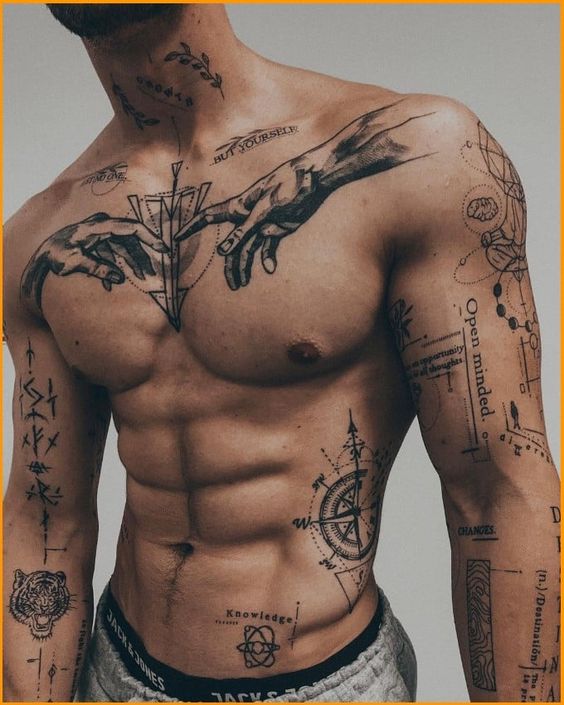
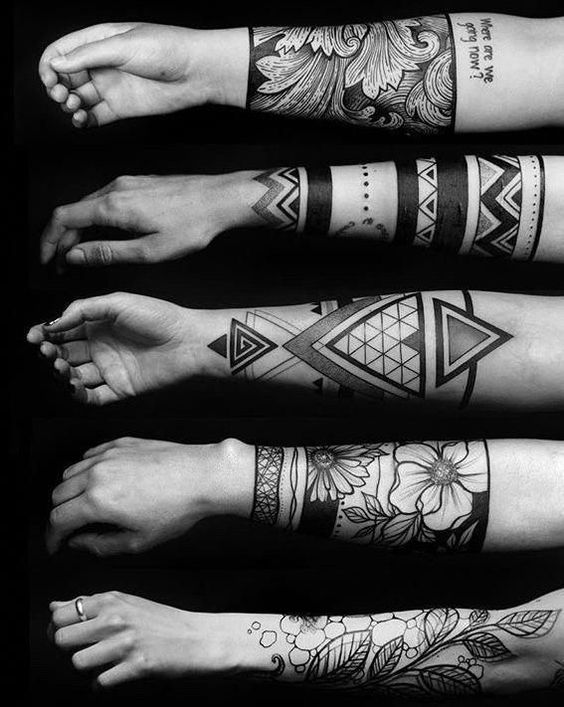
There are various tattoo styles to choose from, ranging from traditional to hyper-realistic. Each style has its own unique characteristics and meanings. For instance, traditional tattoos are known for their bold outlines and bright colors, while watercolor tattoos are known for their soft, dreamy appearance.
To help you understand your preferences, it is recommended that you research different tattoo styles and ideas. You can also browse through tattoo artist portfolios to get a sense of their style and expertise.
Consulting with Tattoo Artists
Consulting with a tattoo artist is another important step in choosing the right tattoo style. A good tattoo artist can guide you through the process and offer expert advice on what will work best for you.
When consulting with a tattoo artist, be sure to bring in any ideas or references that you have. This will help the artist understand your vision and create a design that meets your expectations. It is also important to communicate your preferences and any concerns you may have.
In addition, it is recommended that you choose a tattoo artist who specializes in the style you are interested in. This will ensure that you get the best possible result and that your tattoo looks exactly as you envisioned it.
Overall, choosing the right tattoo style requires careful consideration and consultation with a professional tattoo artist. By understanding your preferences and working with an experienced artist, you can create a tattoo that reflects your personality and artistic expression.
Tattoo Styles in Pop Culture

Influence of Celebrities and Media
Tattoos have always been a part of popular culture, but in recent years, they have become even more mainstream. This is largely due to the influence of celebrities and media. Many famous actors, musicians, and athletes have tattoos, and they often show them off in public. This has helped to make tattoos more acceptable and even fashionable.
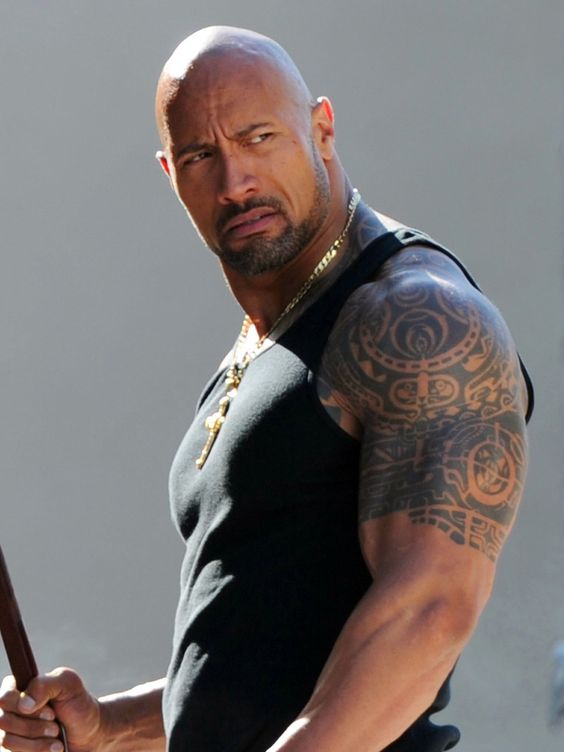
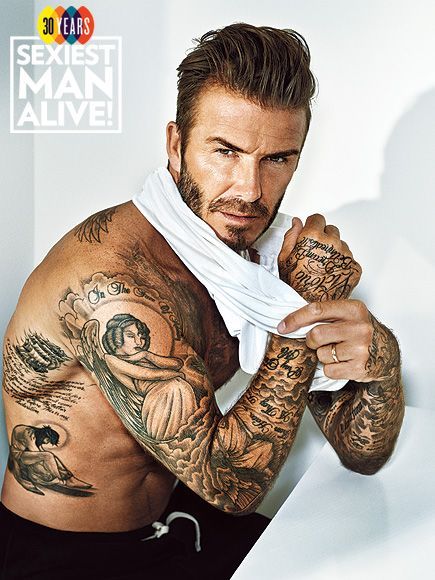
One example of a celebrity who has had a big impact on the tattoo industry is David Beckham. He has a large number of tattoos, including a sleeve tattoo on his right arm. This has helped to popularize the new school tattoo style, which features bright colors and bold designs.
Another way that celebrities have influenced the tattoo industry is through social media. Platforms like Instagram have made it easier for people to share their tattoos with others. This has helped to create a community of tattoo enthusiasts who can share ideas and inspiration.
Tattoos on Social Media
Social media has also had a big impact on the way that people view tattoos. In the past, tattoos were often seen as something that only criminals or rebels would get. But now, they are seen as a form of self-expression and art.
One of the most popular hashtags on Instagram is #tattoo. This has helped to create a huge online community of tattoo enthusiasts who share their tattoos with others. Many tattoo artists also use social media to showcase their work and attract new clients.
Overall, tattoos have become more accepted and mainstream in recent years, thanks in part to the influence of celebrities and social media. Whether you prefer traditional tattoos or hyper-realistic ones, there is a style out there for everyone.
Future Trends in Tattooing

Technological Advancements
The tattoo industry is constantly evolving, and technological advancements are playing a significant role in shaping its future. One of the most notable advancements is the use of 3D printing technology to create realistic 3D tattoos. This technology allows artists to create tattoos that appear to be popping off the skin, giving them a unique and eye-catching look.
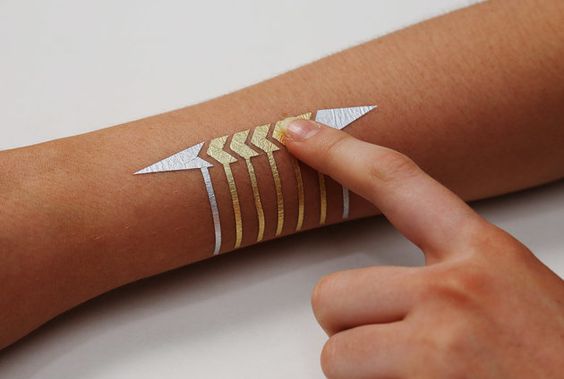
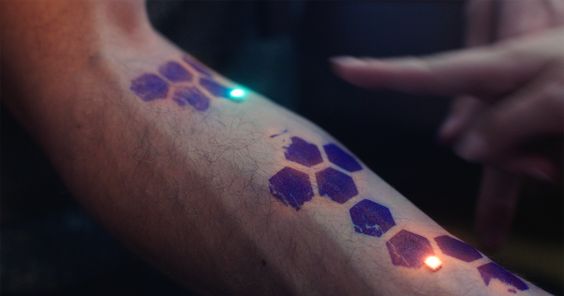
Another technological advancement that is gaining popularity is the use of augmented reality (AR) in tattoos. AR tattoos use a mobile app to bring the tattoo to life, creating an interactive and immersive experience for the wearer and those around them.
Emerging Tattoo Styles
As the popularity of tattoos continues to grow, so does the demand for new and unique tattoo styles. One emerging style that is gaining traction is micro-realism. This style involves creating realistic images that are incredibly detailed and intricate, often requiring the use of a magnifying glass to fully appreciate the artistry.
Another emerging style is hyper-realistic tattoos, which take realism to the next level by creating tattoos that look like photographs. These tattoos require a high level of skill and attention to detail, but the results can be truly breathtaking.
The Human Body as a Canvas
Tattoo artists are also exploring new areas of the body to use as a canvas. While tattoos have traditionally been placed on the arms, legs, and back, artists are now experimenting with tattoos on the face, neck, and even inside the ear.
As the world of tattooing continues to evolve, it’s clear that there are exciting new trends and styles on the horizon. Whether it’s through technological advancements or new styles of tattooing, the future of tattooing is sure to be an exciting one.
- 7.7Kshares
- Facebook0
- Pinterest7.7K
- Twitter0
- Reddit0


